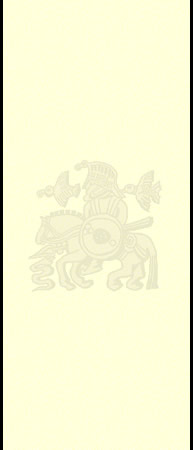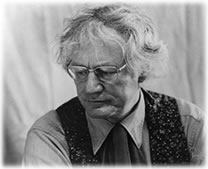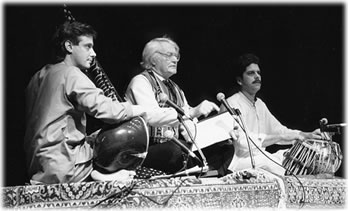



| Web site design and maintenance by Akikaze Media Services. All content of this site, unless otherwise noted, is copyright ©2001 Robert Bly. All Rights Reserved. Any duplication, in any form without the written consent of the copyright holder is prohibited. |
Interviewer: Your life has been so entirely occupied with writing poetry, editing and translation of poems, how did your work with men come about?
Robert Bly: It happened through my teaching. On the farm I was never able to support myself by writing, even though I translated a book from the Danish called Reptiles and Amphibians of the World, followed by a translation of Hamsun's Hunger from the Norwegian. After that I did The Story of Gosta Berling, translated from the Swedish of Selma Lagerlof. I also did some short stories of Strindberg, which didn't get published. I loved translating fiction, but, as it turned out, I couldn't support a family on that.
 During the Seventies I had a longing to learn something about mythology, and so I printed up a poster announcing a Conference on the Great Mother. That was in 1974. About 45 people came to a woods camp in Colorado. It was there I told my very first fairy tale. It was a Celtic story with castles and old ladies and some toads and so on. The implications of it for the growth of an adult person were astounding. I told the story poorly, but we discussed it well. I wasn't the first to have discovered that many of the classic fairy tales lay out stages of initiation into adulthood which we've entirely forgotten, that our ancestors apparently knew a lot about. We're reduced to the legal age for drinking or the driver's license.
During the Seventies I had a longing to learn something about mythology, and so I printed up a poster announcing a Conference on the Great Mother. That was in 1974. About 45 people came to a woods camp in Colorado. It was there I told my very first fairy tale. It was a Celtic story with castles and old ladies and some toads and so on. The implications of it for the growth of an adult person were astounding. I told the story poorly, but we discussed it well. I wasn't the first to have discovered that many of the classic fairy tales lay out stages of initiation into adulthood which we've entirely forgotten, that our ancestors apparently knew a lot about. We're reduced to the legal age for drinking or the driver's license.
During the Seventies a tremendously healthy discussion was going on as well in the US around therapy, fairy tales, mythology, stages of growth and the meaning of initiation. I first heard Joseph Campbell talk in Toronto in 1975, and his book The Hero With a Thousand Faces was the Bible of those discussions. He welded many different stories and myths together in a way that emphasized the heroic male, the young hero who leaves his village, fights various multiple-headed beings, gets a boon, and brings it back to the village. That was the initiation, so to speak, of the male hero. Do women have different stages of initiation? That wasn't discussed. Do artists have different stages of initiation? That wasn't discussed. Are there spiritual roads that involve the male learning grief? That wasn't discussed. Every book can contain only a small sliver of the vast field of mythology. Joseph Campbell opened the awareness of the link between mythology and initiation, and the discussions went on for years.
The Center for Healing Arts in Los Angeles, the Jung Center in San Francisco, and others asked me to tell fairy stories to groups of men and women and relate them to their ordinary life. The best stories for this purpose were from the Celtic clan, the Grimm Brothers, and the Russian collection by Afanasev. Two things became apparent. Women were much more willing to talk about their disasters and delights than the men. Most of the stories that we know– "Snow White," "Rose Red and Snow White," "Rapunzel," "The Goose Girl," "Thousandfurs," "Sleeping Beauty," "The Girl with Silver Hands," "The Goose Girl at the Spring," "Maid Maleen" and so on–were of great interest to women.

Finally the men in these weekend seminars began to ask for a story that was specifically about the stages of masculine development. I found "Iron John," or "Eisener Hans." I promised the men that I would do a book on that. Eight or nine years passed and the men kept saying, "Where is it?" Toward the end of that time, I had begun holding some seminars for men only. The first was at Lama Commune in New Mexico. Meanwhile Bill Moyers had heard about the work and was interested in doing a PBS program on it. When his program appeared, the work that I and many other teachers had been doing for ten or twelve years surfaced into public consciousness. It seemed to be just the right moment. The serious respect that had developed for Freudian and Jungian therapy meant that both men and women were willing to talk about some of their suffering in public, which people, particularly men, in my father's generation would never have done.
Men we saw took a deep interest in poetry and mythology. I thought it was beautiful. The media dismissed all this work as drumming and running in the woods, which reduced it to something ridiculous. I think the men's seminars were not threatening to the women's movement at all, but a lot of the critics of Iron John missed the point. Various horizontal forces have recently pulled the women's work away from feeling and pulled the men's work toward fundamentalism. Nevertheless, the Christian Science Monitor estimated that there are a hundred thousand men in the New York-Connecticut-Massachusetts area participating in "leaderless men's groups." I still do a lot of teaching of men, and with Marian Woodman particularly, of groups of both men and women.
Interviewer: One quality of the men's work that surprised me was the amount of poetry that you and James Hillman and Michael Meade read or recited to the men's groups. The three of you gathered many of those poems in The Rag and Bone Shop of the Heart. In a sense, the men's work amounted to university teaching outside the university setting.
Robert Bly: The media doesn't want to know that. The media has tried to paint things differently. The most powerful enemies of men's openness are the corporate men. Three or four years ago there were hundreds of posters in New York one spring saying, "You don't need to beat a drum or hug a tree to be a man." At the bottom: "Dewar's Whiskey." The corporate world dares to say to young men, knowing how much young men want to be men, that the only requirement for manhood is to become an alcoholic. That's disgusting. It's a tiny indication of the ammunition aimed at men who try to learn to talk or to feel. I think that the best result of the men's work so far, beyond the emphasis on grief, is the concept of mentoring, that is, providing older men for men who have no fathers. Bob Roberts has started up Project Return in New Orleans, and that project provides older ex-cons as mentors to young men coming out of prison. The return rate to prison for these young men is 15%, compared with 85% in the ordinary government programs. The major difference is the use of mentors in Bob Roberts's program.